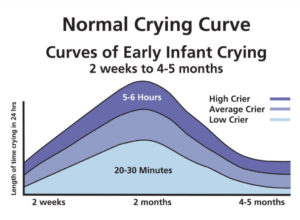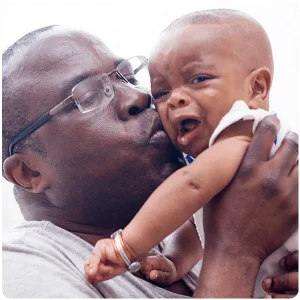Abusive Head Trauma and ICON
Nationally, Abusive Head Trauma affects up to 25 children per 100,000 in the UK (Kemp, 2011) and this is felt to be an underestimation. The evidence suggests that around one third of severely shaken infants subsequently die as the result of being shaken (Bonnier et al., 2003) and more than half of children aged 0-4 years injured by abusive head trauma will die before they turn 21 years old (Joyce et al., 2018). Further, evidence suggests that males are responsible for inflicting Abusive Head Trauma due to shaking, in approximately 70% of cases (Al-Saadoon et al., 2011) however, depending on the research paper this figure can fluctuate anywhere between 60% and 90%.
The ICON Programme is being implemented in Merton from 5th December 2022 in response to a recommendation from a Local Child Safeguarding Practice Review for a child referred to as Baby Grace. You can read the full review by clicking here.
It is hoped that the ICON message will become an established programme of intervention, which reinforces a simple message to parents and carers regarding how to cope with infant crying.
Free training on ICON can be accessed via the this link: ICON eLearning – Babies cry, you can cope (iconcope.org)
The MSCP is auditing the rollout of the ICON message for both professionals and parents/carers. If you would like to participate in a short survey to share your views and help us improve as a partnership, please follow the links below:
Audit Form for Parents / Carers
What is abusive head trauma (AHT)?
- ‘Shaken baby syndrome’
- Child abuse
- Catastrophic injuries:
- Bleeds in the brain and behind eyes
- Fractures
- Babies can be shaken, thrown or hit
- It affects approximately 24 of every 100,000 babies admitted to hospital each year
- Research suggests one in nine mothers may have shaken their baby and up to two in nine felt like doing so.
Who shakes and why?
- 70% perpetrators are males – fathers/male surrogates (Kesler et al., 2008; Altman et al., 2010)
- Can occur in every socio-economic group
- Coping with crying can feel like living on a cliff edge
- Caregivers lose control and shake – baby stops crying
- Demonstrable relationship between the normal peak of crying and babies subject to AHT (Barr et al., 2006)
- Increase in cases in the first month of life, a peak at six weeks during the second month and a decrease during the third to fifth months of life
Triggers
- Crying is considered the main trigger
- Peak of crying is six to eight weeks of age
- The parents or the mothers partner are responsible for AHT in 75% of babies
- The majority of perpetrators are male
- The most at risk groups are:
- Male babies
- Babies below 6 months
- Babies with a low birth weight
- Families in regular contact with health professionals
Crying Curve

![]()
ICON is a public health programme that has been designed to help any person caring for babies to cope with periods of crying. ICON stands for:
I – Infant crying is normal. It will stop
C – Comforting methods can help
O – It’s OK to walk away
N – Never, ever shake a baby
The idea for the ICON programme and the different interventions within it was conceived by Dr Suzanne Smith PhD following a study of effective interventions and research into the prevention of Abusive Head Trauma (AHT). Research suggests that some lose control when a baby’s crying becomes too much. Some go on to shake a baby with devastating consequences. Suzanne found that the most effective evidence-based programmes studied provide a simple message that supports parents/care givers to cope with infant crying. Apart from preventing AHT, most people who have ever cared for a baby appreciate some advice about how to comfort a crying baby and how to cope when it goes on for a long time.
For more information regarding ICON, please visit the official ICON website
From the 5th December 2022, Merton will be implementing a systems wide approach to ICON.
ICON has been successfully rolled out across the MSCP with training available for professionals. Training can be accessed via the following link: ICON eLearning – Babies cry, you can cope (iconcope.org)
Ellis’s Story
Some may find this video distressing. Viewer discretion is advised.
I Am Unshakeable Video
A useful video to show to parents – particularly male carers.
Shaken Inside Out Documentary
A really useful documentary that includes the modelling of how to share ICON with parents and carers.
Leaflet explaining the ICON acronym to share with parents and carers.
Simple poster explaining the ICON acronym with QR code.
Explanation of the ICON acronym plus baby graphic and QR code.
For more free, downloadable resources, please visit the ICON Resource Page

